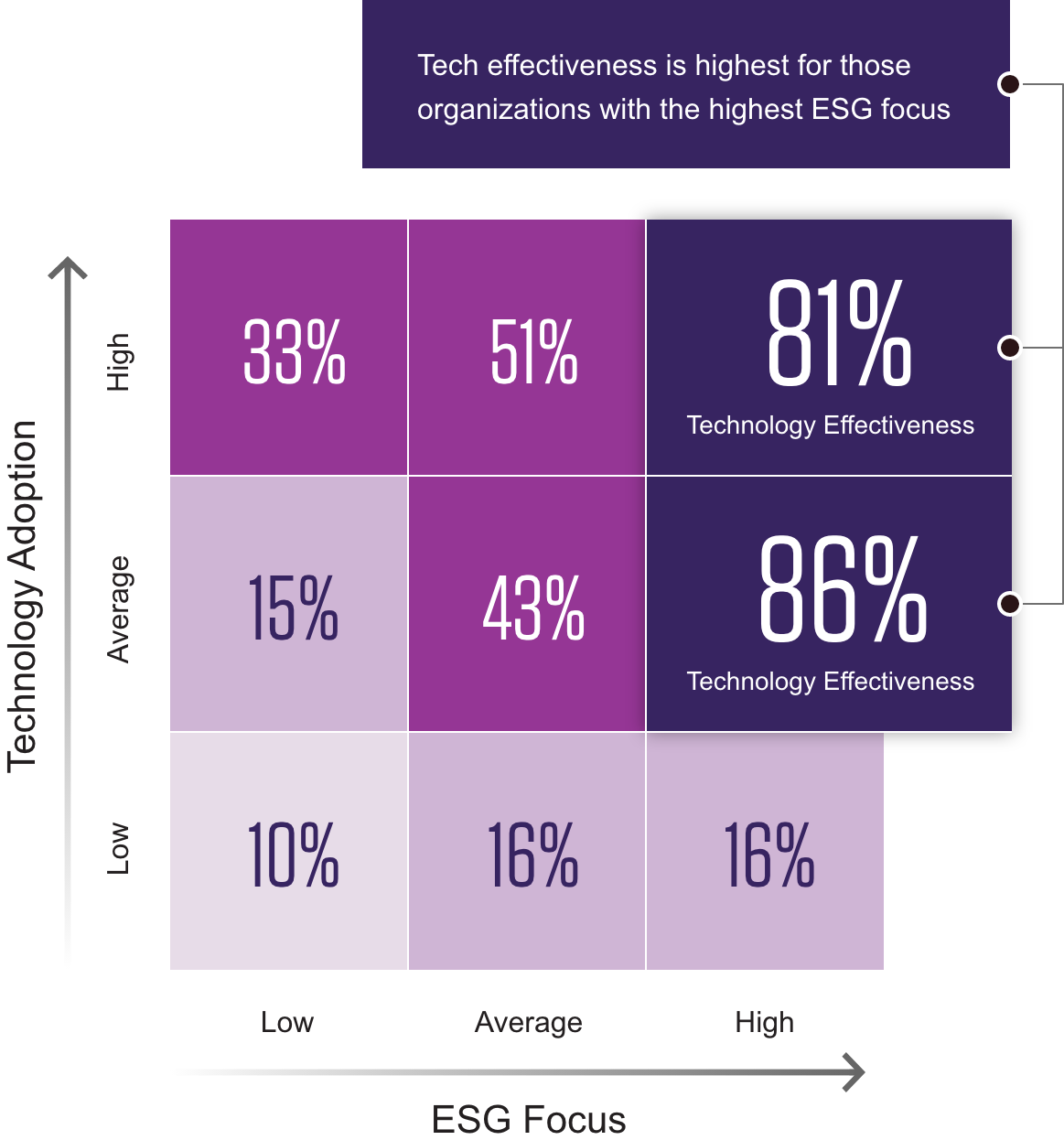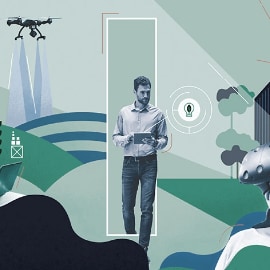Human-focused strategies drive technology productivity and competitive edge

Humans at the center
Humans matter. We've proven that companies focusing on humans get better outcomes from their technology. And better technology outcomes drive better profits. We've defined three building blocks that will help your company catalyze a human-centric future.
The Executive Summary

The Building Blocks
The three building blocks for the Human-centric future are: Human-centric design with purpose at its core, Hyper productive empowered humans and an Enterprise metaverse to operate and thrive in

Human-centric Design
Watch videoWe explore human-centric experience, including progressive, adaptive, and natural technology interfaces. We also discuss data empowerment, sentience, and using technology for the good of people, profit, and planet.
Explore
Hyper Productive Humans
Watch videoWe look at a firm's hypothetical journey from democratizing its software knowledge (no-code, low-code), to augmenting workers using AI-driven coding and writing, to an organization that automates its core processes from the inside out.
Explore
The
Enterprise Metaverse
Watch video The final stage on our journey towards human-centered everything. With the whole enterprise ecosystem built out of interoperable code, humans have access to the IP not only of their own firm, but of the whole system of systems.
Explore
Focus on efficiency is no longer enough; chasing revenues
alone can actually risk business resilience.
Putting humans at the center of design and development involves progressive, adaptive, and natural interfaces to technology systems. These “total experience” systems predict intent and satisfy diverse user profiles. They understand what humans are really looking for from their technology. They foster emotional connection and provide what-next recommendations by factoring in possible frustrations and fears of humans when communicating with technology.
Data collected to optimize these user journeys can be safely guarded in the cloud, ensuring the data is private, and, importantly, only used for the intended purpose.
A good product accounts for human fears around safety and transparency and is increasingly sentient.
These systems can also be built for diverse populations, removing biases and prejudices in the development stage. In this way, technology creates an evolving, multi-variate, live experience with humans at the core.
This practice also ensures that technology is inherently “good," ensuring systems meet high standards of employee and customer wellbeing, with ethical metrics and upskilling programs in place.
Research shows that no sector received a trust rating of over 50% when it comes to how they acquire and process data.

With no-code, low-code, executives can make their businesses more innovative, resilient, and data-driven.
Systems built around human wants, needs, and desires are important, but coders are in short supply. Firms should do well to harness the creative capability of the entire workforce.
No-code, low-code (NC/LC) technologies require little coding knowledge to build applications and processes. This enables firms to surmount the dearth of talent in this area while empowering “citizen coders” to utilize their collective imagination on a working product.
A further step towards hyper productive organizations is AI-driven coding and writing. Here, firms like OpenAI, Google, and Microsoft are creating AI systems that do the hard labor. These systems turn natural language into different programming languages, auto-complete segments of code, fine-tune AI models, search source-code, and find troublesome bugs. Some ML systems are even used to create better ML models.
Clearly we are heading to a future where one simply speaks into an Excel interface, and a report is generated in minutes.
Organizations that lead in AI operations, including the ability to scale native automation, outperform laggards by as much as 6 percentage points of operating margin.
The final step of this hyper productive journey is a paradigm called native automation. Here, organizational processes are taken apart and reimagined from the ground up, infusing AI and sentient principles into technology systems. Live Enterprise, Infosys' own journey toward a completely self-learning, evolving organization, is a good example of this transformation; as is our work with BP and its fully autonomous store.
Our AI research has found that by focusing on both the employee and the customer, operating margins can increase by 2 percentage points. This implies that a U.S. banking firm with revenue of $10 billion can add an extra $200 million through this — no small figure, right?

The ability to collaborate across functional boundaries increases a firm’s chance of growth compared to competitors by as much as 7%.
The metaverse concept has been recently popularized by Meta, but also finds applications across enterprises. We define metaverse as a world where humans are connected to digital twins of themselves (and everything else imaginable), with identities and assets completely run by computer code, and transferable across platforms. The metaverse will be underpinned by cloud continuum, edge products and other exponential technologies, with a creator economy built around NC/LC and collaborative design and development tools.
Further up the stack, we envision enhanced enterprise exploration facilities, with ratings, stores, and software and data marketplaces for sharing and collaboration of data. All of this information will be accessed through open interfaces that work across enterprise-wide software systems and applications.
70% of the workforce now say they want flexibility. At the same time, 70% want human connection to collaborate. This paradox can be partly solved through the enterprise metaverse.
This metaverse architecture will make enterprise professionals more productive, innovative, and successful. It will also meet people where they are, with experiences that are more perceptive, sentient, and present.
Imagine a manager who wants to offer customers a new product to establish credibility and avoid their churn. But all the related parameters are scattered - the CRM data is in Salesforce, logistics data is trapped in an SAP system (managed by another department), and the pricing tool is archaic and poorly managed.
But in the metaverse, the enterprise cloud system knows the manager's name, access level, and the data, systems, and people needed to get the work done. It also knows how the manager and her team like to use data, and has a deep understanding of their online behavior, moment to moment. In this example, the system recommends NC/LC tools with strong design elements. These tools can be quickly purchased from a self-service software marketplace, with connectors to the original databases. The manager will thus be able to provide her team with the ability to determine the right product to sell, and at the right price point. And all this in days, rather than months.
This new enterprise meta-fabric will ignite completely new business and operating models. Firms poised for success will be those that use Agile methodologies widely, flatten organizational structures, and where necessary, become platforms on which others can build products.
Our research found that with the intelligent cloud and intelligent edge working in harmony, firms bring together the internet of things, digital twins, and mixed reality. This effective cloud usage will drive over $400 billion in annual profits in the surveyed markets.
It will be those that consider the human element throughout the product lifecycle who will become more innovative.













